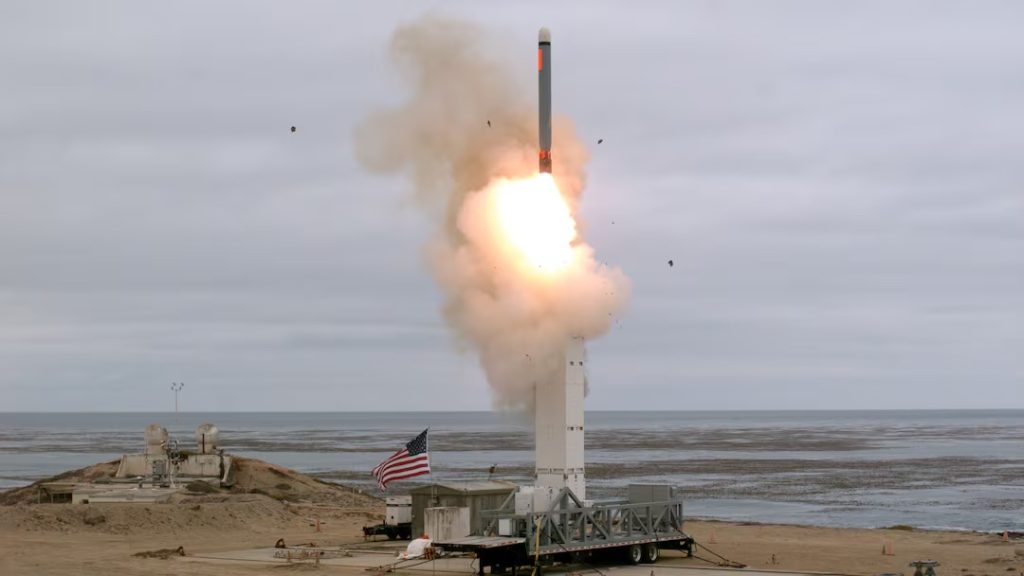Rocket engine manufacturer Ursa Major will receive $12.5 million from the US Navy and the Office of Strategic Capital (OSC) to scale the production of 3D printed solid rocket motors (SRM).
The prototype project agreement (PPA) will see the company design, manufacture, and test a new SRM prototype for missiles critical to national security. The US-based rocket manufacturer is one of the inaugural recipients of investments from the OSC, which seeks to strengthen domestic defense supply chains.
The funding will be used to mature Ursa Major’s 3D printing-powered Lynx SRM manufacturing process. In particular, the company will expand its propellant manufacturing, additive manufacturing, and composite case winding capabilities.
This follows the news earlier this year that Ursa Major is 3D printing the Navy’s Mk 104 dual rocket motor, which powers the SM-2, SM-3, and SM-6 missiles.
High demand for SRMs is currently coupled with a shortage of domestic suppliers in the US. Supply chain challenges are stunting the US Department of Defense (DoD)’s efforts to restock US inventories and support Ukraine and Israel’s ongoing war efforts. Ursa Major is working to address this demand with Lynx, by accelerating the production of key missile components on American soil.
“We are proud to work with OSC on their mandate for expanding the defense industrial base by bringing new innovations into the DoD ecosystem,” commented Daniel Jablonsky, Ursa Major CEO. “Ursa Major is revolutionizing manufacturing approaches used in propulsion development in the United States, building flexibility of production and scalability into manufacturing for our defense customers.”
The OSC delivered this funding under its Transition Acceleration Program. Ursa Major will match this capital injection, bringing the joint investment to a total $25 million expansion of its SRM capabilities.

DoD and Ursa Major scale SRM production in the US
The award was contracted by Advanced Technology International (ATI) in collaboration with funding sponsors OSC and the Navy’s Program Executive Office Integrated Warfare Systems (PEO IWS 3.0).
Ursa Major will use the funding to complete an OSD(R&E) Advanced Manufacturing Pathfinder program to design, manufacture, and test the new SRM prototype.
Collaborating with the Naval Air Weapons Center China Lake and the Naval Surface Warfare Center Indian Head Division, the company will leverage its proprietary Lynx technology to manufacture the key missile comoponent.
Launched in December 2023, Lynx technology combines additive manufacturing with product-agnostic tooling to quickly and simultaneously produce multiple SRMs in the same production line.
Lynx can be adapted to fabricate different casing sizes ranging from diameters of 2 inches to 22.5 inches. As such, it can produce propulsion systems for most missiles, including stingers, GMLRs and other air defense missiles.
Traditional SRM production lines are difficult to re-tool, expensive to ramp up, and dependent on large workforces. Lynx reportedly introduces flexible and scalable manufacturing capabilities to this process, unlocking higher-volume SRM production at a fraction of the price.
Ursa Major is currently using this technology to develop a second source Mk104 Dual Thrust Rocket Motor (DTRM) for the US Navy through a separate contract. This will power the Navy’s Standard Missile arsenal of SM-2 surface-to-air missiles, SM-3 ballistic missiles, and SM-6 anti-air, land, and sea missiles.

Take 10 seconds to tell us the impact of this news using the block below. Make sure you click submit!
3D printing secures US-based rocket supply chains
The US DoD is increasingly adopting additive manufacturing to strengthen domestic production and supply of critical defense technologies.
Aerospace firm Aerojet Rocketdyne was recently awarded a $22 million DoD-funded contract to develop a new 3D printed hypersonic propulsion system prototype. The company is developing the prototype through the Pentagon’s Growing Additive Manufacturing Maturity for Airbreathing Hypersonics (GAMMA-H) challenge.
GAMMA-H is part of the DoD’s ongoing efforts to identify and develop new processes to produce components for hypersonic weapons. It hopes the project will establish additive manufacturing processes that meet the performance and environmental requirements of modern hypersonic airbreathing systems.
Aerojet Rocketdyne expects it will take 36 months to deliver the 3D printed hypersonic propulsion prototype. The company is set to streamline its production workflow by consolidating key steps of the scramjet manufacturing process. This will reportedly create a less fragmented supply chain, unlocking schedule and cost efficiencies.
Elsewhere, US Defense firm Lockheed Martin is 3D printing key components for its new Mako hypersonic missile. Additive manufacturing is being used to produce the jet-fired missile’s guidance section and fins.
3D printing these parts has reportedly enabled significant time and cost savings. According to Lockheed, the 3D printed guidance section is ten times faster to produce than other manufacturing methods. It is also 1/10th of the cost of its conventionally-manufactured counterparts.
The US DoD funded the initial development work on the Mako. However, recent reports indicate that Lockheed Martin may initially produce the missile in the UK through the Aukus agreement.
Away from defense applications, SpaceX, Elon Musk’s commercial rocket company, will license metal 3D printers from California-based additive manufacturing OEM Velo3D. The new deal will see SpaceX pay Velo3D $5 million for its 3D printing technology.
This deal builds on previous contracts to supply SpaceX with 3D printers. Previously, the firm 3D printed parts of its Raptor engines, with Musk claiming that SpaceX has the “most advanced 3D metal printing technology”.
Nominations are now open for the 2024 3D Printing Industry Awards.
What does the future of 3D printing hold?
What near-term 3D printing trends have been highlighted by industry experts?
Subscribe to the 3D Printing Industry newsletter to keep up with the latest 3D printing news.
You can also follow us on Twitter, like our Facebook page, and subscribe to the 3D Printing Industry Youtube channel to access more exclusive content.
Featured image shows a conventionally configured ground-launched cruise missile launched by the U.S. Department of Defense (DOD) during a test. Photo via Reuters.


